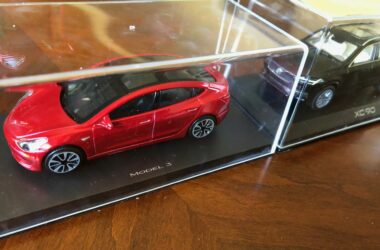We’ve had our Tesla Model 3 for well over a year now, but never managed to take it on a road trip outside the Bay Area until this past holiday period, in part due to my concerns about being stuck on the road in a compact vehicle with a bunch of irritated toddlers. We rectified that recently, as our family made a quick trip down to Disneyland to welcome 2020, and we wanted to see what a SF → LA road trip felt like in an electric vehicle (EV).
Now that EVs have become more commonplace, those initial anxieties around range have been significantly alleviated via increased battery sizes as well as the cumulative investment made in charging infrastructure. Electric cars today are routinely targeting 200+ miles of range, and Tesla vehicles in particular have pushed for 300 miles and more on a single charge with their biggest battery options.
For our trip, it so happens that the SF → LA corridor—along both the I-5 and US-101 primary routes—is likely the most Supercharger-covered vehicle corridor in the world. With Tesla’s HQ and factory in the Bay Area and its design studios based in LA, California is the company’s home turf and boasts the sales and infrastructure consummate with that status. Plenty of Tesla-branded cars roam the streets and freeways of our state, so much so that the kids have made it a game to call out identically colored Model 3s as the modern Punch Buggy.
That said, the trip still required us to spend more time planning segments of the drive, in addition to allocating more downtime at each stop1 for charging. Even with a comparatively smaller battery in the Model 3, Tesla’s second and third generation fast-charging capabilities, and a conservative 35–50% charge remaining per stop schedule—these pit stops took at least 30 minutes each. The Superchargers themselves are strategically located next to shops, restaurants and other attractions; we were lucky as the weather allowed us to take advantage of the wait to check out roadside curiosities that would have been readily skipped otherwise.
In some ways, this buildout of EV charging infrastructure represents an updated, parallel take on creating a support network for fueling cars in the 21st century, the equivalent of building gas stations from scratch in an age of connectivity and established geographies. For instance, with maps available via both phones and the car’s own 4G connection, it’s easy enough to find nearby charging stations and figure out available capacity in real-time, without having the station itself erect a giant sign next to the freeway to attract patronage. The stations of course have to be close to freeway off-ramps for convenience, but they do not have to bid for valuable real estate with an eye towards driver visibility, and in fact most of the stations we visited were pretty low-key and out of the way.
Charging stations also do not have to adhere to business model of traditional gas stations. They seem quite easy to set up—with seemingly the only requirement being electrical access—compared to the logistical complexity required to handle and store flammable petroleum. Since the vast majority of EV chargers are built by car manufacturers to sell more vehicles, the typical gas station strategy of augmenting low profit margins on fuel with auxiliary businesses, convenience stores and chain restaurants also don’t really apply2. Rather, from what we could tell, unrelated adjacent businesses benefitted from the Supercharger’s presence: it created a steady stream of road-tripping customers who had time to kill and generated additional foot traffic. Given that Tesla owners are demographically better off economically than the average population, I suspect the added clientele is quite welcome.
It’s not all good news, however. We’re still in the early days of this infrastructure buildout, and the network is much more susceptible to demand shocks than its much older, petroleum-delivering cousin. As evidenced by the long lines for charging Teslas over busy travel periods, there’s not nearly enough capacity at peak demand, and despite measures to discourage space hoarding, recharging those huge batteries does take a comparatively long time.
Though I suppose that if range anxiety is now replaced with capacity anxiety, that’s a sign of progress.


